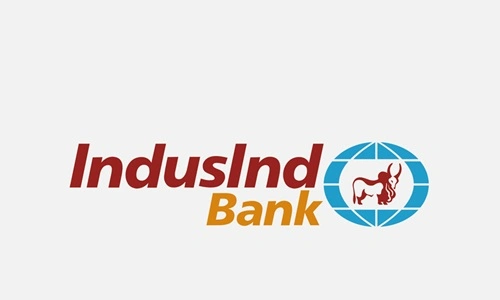Bandhan Bank began as a microfinance pioneer and quickly grew into one of India’s largest retail-focused private banks. Its journey from social-mission micro-lending to a broad-based bank provided deep last-mile distribution, a loyal retail deposit franchise and a strong presence across semi-urban and rural India. As Bandhan moves through 2026, the bank faces a classic growth-versus-risk inflection: opportunities to monetise scale and diversify, alongside renewed pressure on asset quality from its microfinance exposures. The following SWOT distils where Bandhan stands today and what could shape its next phase of growth.
Bandhan Bank Overview

| Item | Detail |
| Name | Bandhan Bank Ltd. |
| Headquarters | Kolkata, West Bengal |
| Latest published deposits | ~₹1.5–1.6 lakh crore (FY25 / Q1–FY26 disclosures). |
| Core focus | Retail, microfinance (EEB), MSME, retail secured loans |
Strengths
1. Deep retail & microfinance footprint
Bandhan’s origin as a microfinance institution gave it an unmatched distribution network and borrower relationships in semi-urban and rural India. That vintage advantage helps sourcing, collections and customer intimacy that many larger banks find expensive to replicate.
2. Large and growing deposit base
The bank has built a substantial deposit franchise exceeding ₹1.5 lakh crore, which provides stable funding to support lending and reduces over-reliance on expensive wholesale borrowings. Strong retail deposits are a core competitive moat.
3. Diversifying product mix
Over recent years Bandhan expanded into secured retail loans, MSME lending and other retail products, improving the share of secured advances and lowering overall portfolio vulnerability relative to pure microfinance players.
4. Recognised brand in last-mile credit
Bandhan’s social-origin story and sustained presence in underbanked regions creates trust and brand recall that supports cross-sell and deposit mobilisation.
Weaknesses
1. Concentration in microfinance (EEB) — risk of higher slippages
A significant portion of Bandhan’s book remains linked to microfinance and small-ticket unsecured exposures. Stress in these segments surfaced as elevated slippages and provisions in 2025–26, denting profitability and highlighting vulnerability to localized shocks.
2. Volatile profitability in recent quarters
Earnings contracted sharply in some recent quarters due to higher credit provisions and margin pressure, showing that headline growth can be fragile when collections weaken.
3. Lower CASA and margin sensitivity
Compared with some larger private banks, Bandhan’s CASA mix has room for improvement; this makes the bank more sensitive to deposit cost cycles and competitive rate moves.
Opportunities
1. Move up the value chain with secured retail & MSME
Increasing the share of secured retail loans (home loans, LAP) and formal MSME credit can stabilise asset quality and deliver lower volatility in earnings. This also opens the door to higher-ticket lending and fee income.
2. Digital and cross-sell potential
Existing customers present an opportunity to scale digital banking, cards, insurance and payment services — raising fee income and reducing incremental distribution costs.
3. Consolidation and strategic partnerships
Bandhan can selectively tie up with fintechs and insurers to accelerate product offerings and distribution, and potentially pursue inorganic deals to expand into complementary geographies or capabilities.
4. Improving recoveries & collection frameworks
Strengthened credit-monitoring, tighter underwriting and sharpened collections can reduce future slippages from the microfinance book and support a return to steadier profitability. Management has signalled focus on asset quality measures.
Threats
1. Macro or sectoral shocks affecting micro-borrowers
Economic slowdowns, crop failures or local employment shocks can disproportionately hit Bandhan’s borrower base and quickly translate into higher NPAs.
2. Competition from banks & fintechs
Large private banks, other SFBs and agile fintech lenders are aggressively chasing retail and MSME customers, putting pressure on pricing, deposit mobilisation and wallet-share.
3. Regulatory scrutiny and provisioning norms
Given the social importance and scale of microfinance, regulatory actions or stricter provisioning/collection norms could raise costs or constrain growth.
4. Market sentiment & capital access
Sharp earnings deterioration or repeated asset-quality surprises could depress equity valuations and make capital raises more expensive, limiting growth flexibility. Recent quarterly shocks illustrate how sensitive investor sentiment can be.
Conclusion
Bandhan Bank’s core strength remains its deep last-mile distribution and proven ability to mobilise retail deposits. These advantages position it well to benefit from India’s formalisation of small-borrower credit. However, the bank’s near-term credentials will be judged on how fast it can arrest microfinance stress, rebuild consistent profitability, and shift the mix toward more secured, higher-fee businesses. If Bandhan tightens underwriting, strengthens collections and leverages digital cross-sell — while maintaining prudent capital buffers — it can translate its scale into sustainable, lower-volatility growth. Conversely, repeated asset-quality shocks would keep returns and investor confidence under pressure.

